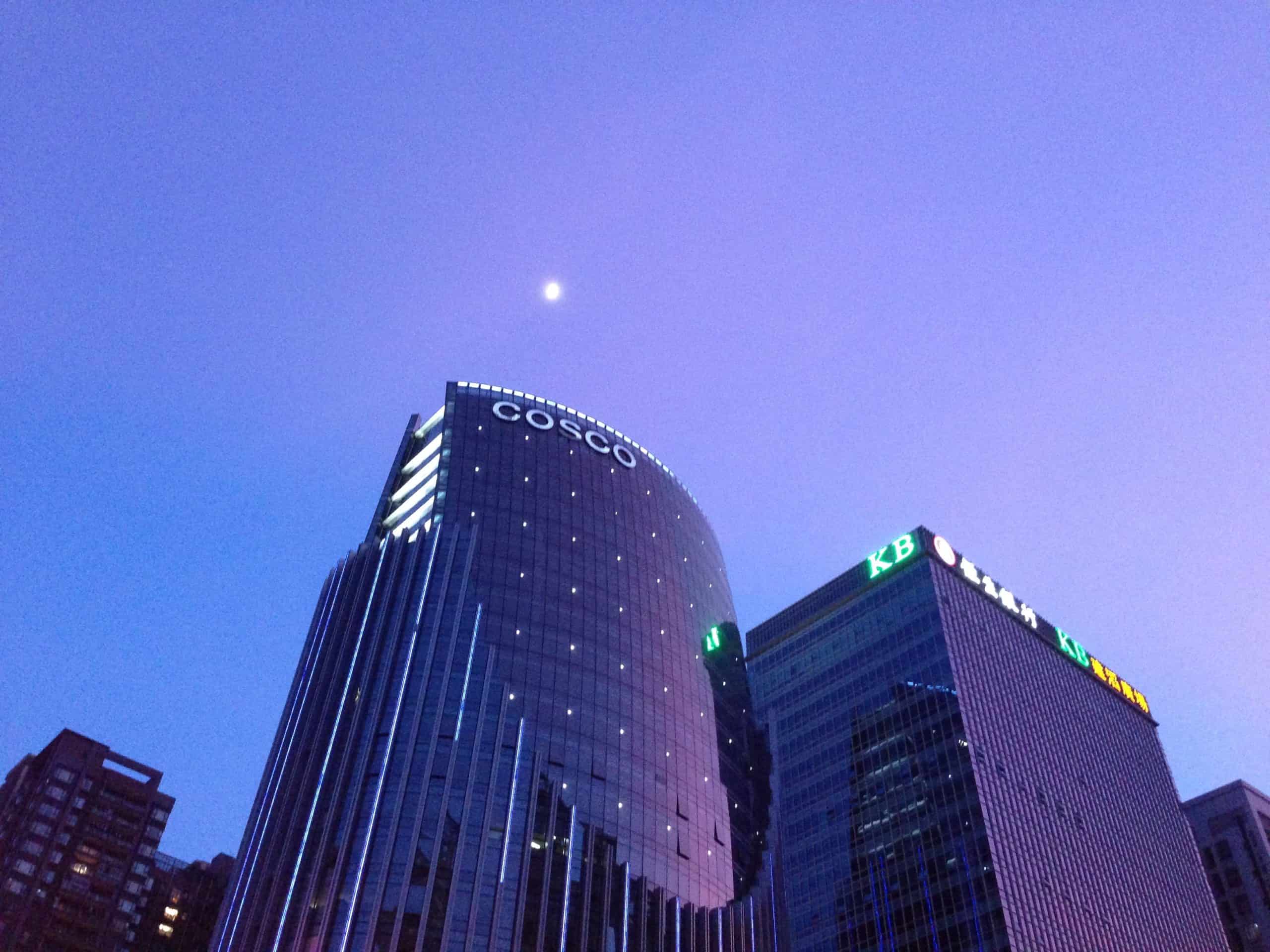Zhujiang New Town – Where Culture, Commerce, and Cuisine Collide
Here is the story of how I came to live in Zhujiang New Town as an English as a Second Language teacher. I made an excellent choice and I’ll share why by telling you about this part of the city.
How Did I Come to Live in Zhujiang New Town?
In February of 2014, I found myself moving overseas to teach in China and chose Guangzhou as my city. I had never heard of it and had no clue as to where it was. My options were Beijing, a city outside of Shanghai, and Guangzhou. I’m not a city girl and of the three options, Guangzhou was the smallest city with only 13 million people at the time. Just a reminder that I come from a state with slightly over 1 million residents. This was way out of my comfort zone. It was Guangzhou for the win.
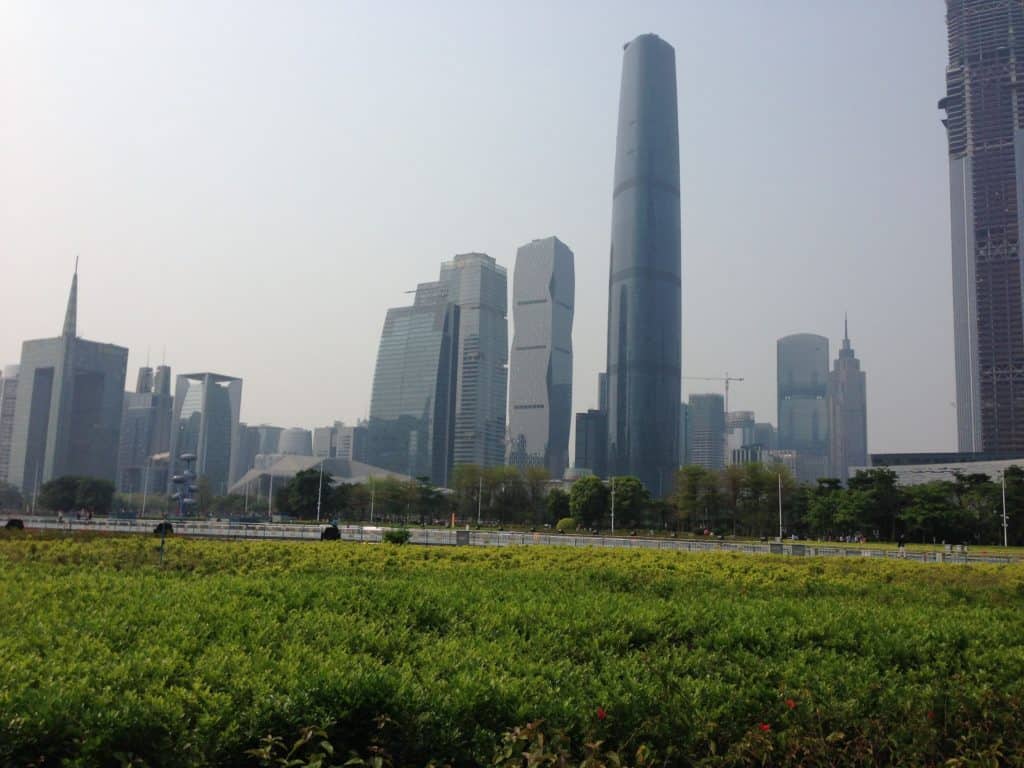
Once I started doing my research, I found out that Guangzhou used to be called Canton by English-speaking people. That was a name I was definitely familiar with. Cantonese people formed the largest group of immigrants to the United States that started in the 1840s. This coincides with the Gold Rush. Most of the Chinese food you love in the United States is based on a Cantonese recipe, perhaps adapted for an American palate.
Finding an Apartment in Zhujiang New Town
During my orientation to China, the city of Guangzhou, and my English school, I was also looking for an apartment. The school recommended several realtors who spoke English and were helpful to foreign teachers. I called three different realtors, and met with all three to view apartments. Each and every apartment they showed me happened to be in Zhujiang New Town.
Was this an intriguing coincidence? Or was this the only area where apartments were available for foreigners? I didn’t know and truthfully didn’t spend time trying to figure it all out. Everything was new to me and I didn’t know how things worked in China. The two apartment buildings I viewed were within 1/4 mile from each other and I chose one after a week of showings.

I chose well and had an English-speaking landlord who was so very easy to deal with. After paying my deposit, and first and last month’s rent, my landlord drove me to the apartment in his luxury car and helped lug my suitcases to the sixteenth floor. This was my Chinese home for the next year of my contract.
The Real Reason I Lived Here
Eventually I found out that realtors liked to direct newcomers to this area because it was one of the more expensive districts to rent in. They earned more in commission, but I honestly didn’t care. My building was convenient, had several other teachers living in it, and was centrally located for me. I felt comfortable here and soon learned where everything that I needed was located.
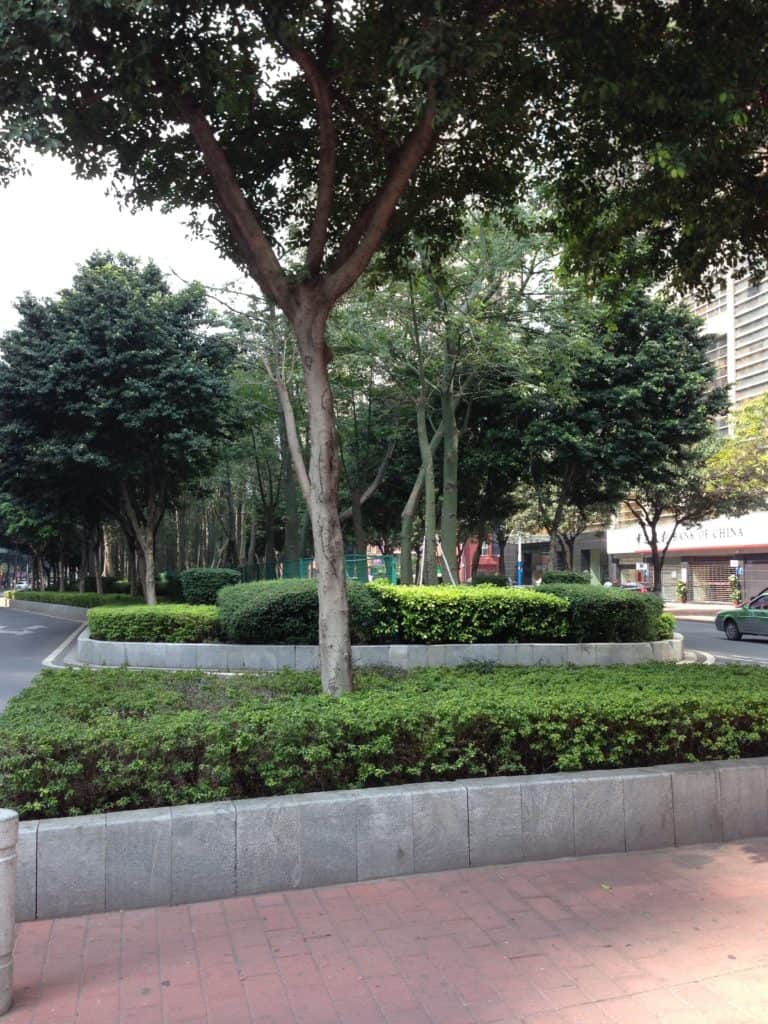
Where is Zhujiang New Town?
Zhujiang New Town is a district in the much larger city of Guangzhou, located in Guangdong Province in Southern China. It is located in the Tianhe District and is one of the most modern and developed areas of the city. Zhujiang New Town has emerged as a symbol of Guangzhou’s rapid economic growth and urban transformation.
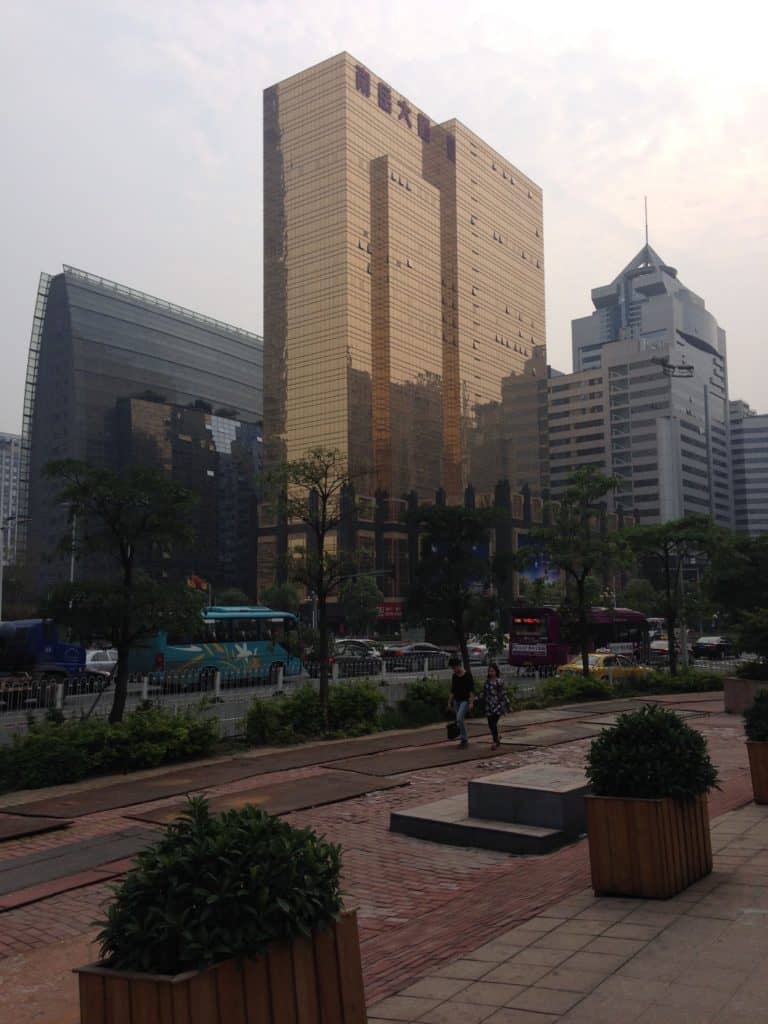
Guangzhou is a manufacturing hub along the Pearl River (Zhujiang) which flows southeast toward Hong Kong and the South China Sea. The area along the river is called the Pearl River Delta and is vital to business in southeast China.
Guangzhou Weather
Since the city is in southeast China, it has subtropical monsoon weather. I can vouch for the monsoon part. When it rains there, frequently from May through the end of September, it is intense but usually short lived. An umbrella, or two, is a necessity you must keep in your bag. I found this out the hard way.
The months of October through April are pleasant and felt spring-like to this New Englander. I never owned a coat while living in China and temperatures range from a low of 50 in winter to a high of mid-90s in the summer.
Zhujiang New Town – the New CBD of Guangzhou
Development of Zhujiang New Town began in the early 2000s as part of a large-scale urban planning project to revitalize the city center. The district was designed to be a vibrant hub for commerce, finance, culture, and entertainment. It was being called the new CBD of the city, the Central Business District. The city’s strategic location along the Pearl River and the closeness to the Guangzhou East Railway Station and major highways make the area easily accessible.
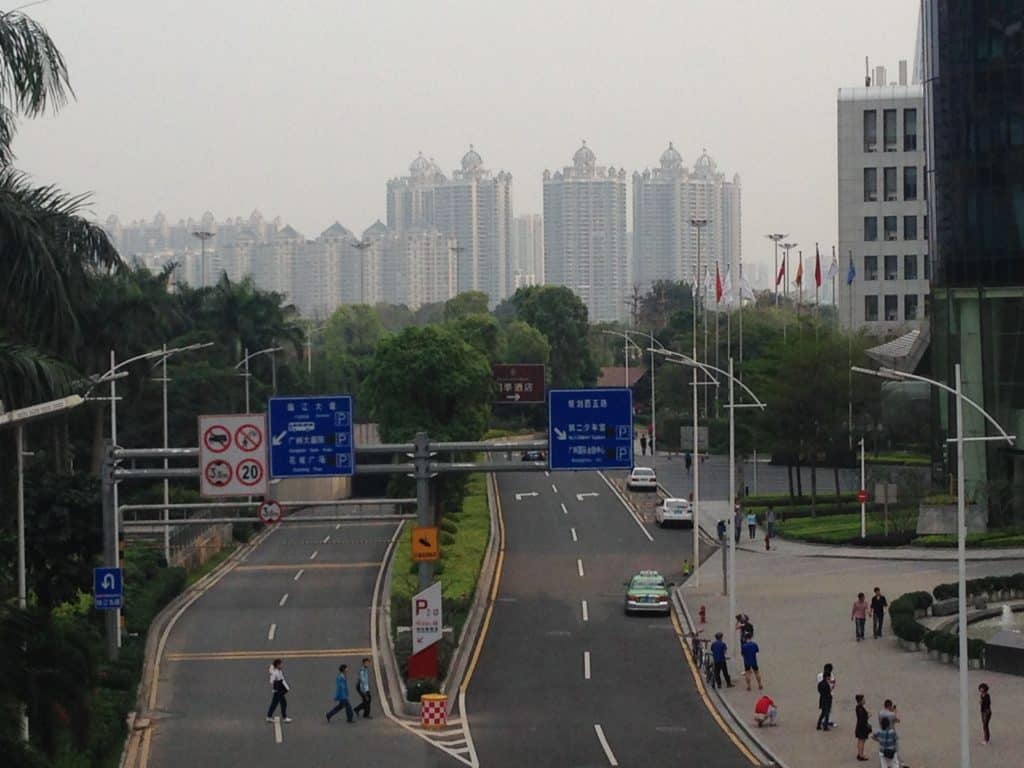
The district is also home to many multinational corporations, financial institutions, and luxury hotels. This contributes to its importance as the Central Business District. The Guangzhou International Finance Center, the IFC, stands as the tallest building in Zhujiang New Town. It is easily recognized by its distinctive shape and pattern of lights that shine brightly at night.
The American Consulate is located here, right down the street from the Opera House and close to the Starbucks. You could often spot the Consulate workers in Starbucks, wearing their security name badges while they ordered their drinks.
What Interesting Architecture is in Zhujiang New Town?
One of the prominent features of Zhujiang New Town is its modern skyline dominated by brightly lit high-rise buildings. Iconic structures include the Guangzhou Opera House designed by Saha Hadid and the Guangdong Museum designed by Rocco Design Architects. These buildings have become landmarks and symbols of the city’s modern cultural aspirations.
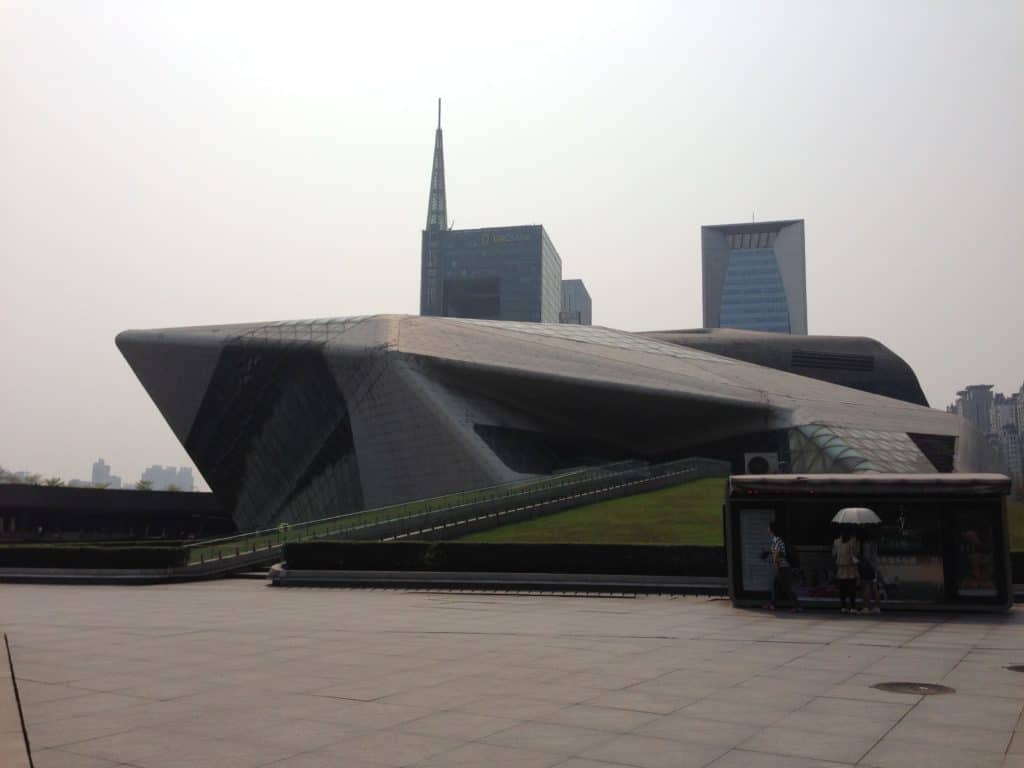
Visible from the district but located on the other side of the river, the Canton Tower is visible from many parts of Zhujiang New Town. This tower has become the symbol of Guangzhou. Acting as a radio and TV transmitting tower, you can go inside to the observation decks, restaurant, or ride the roller coaster at the top. To learn more about this city symbol, read about it in this blog post.
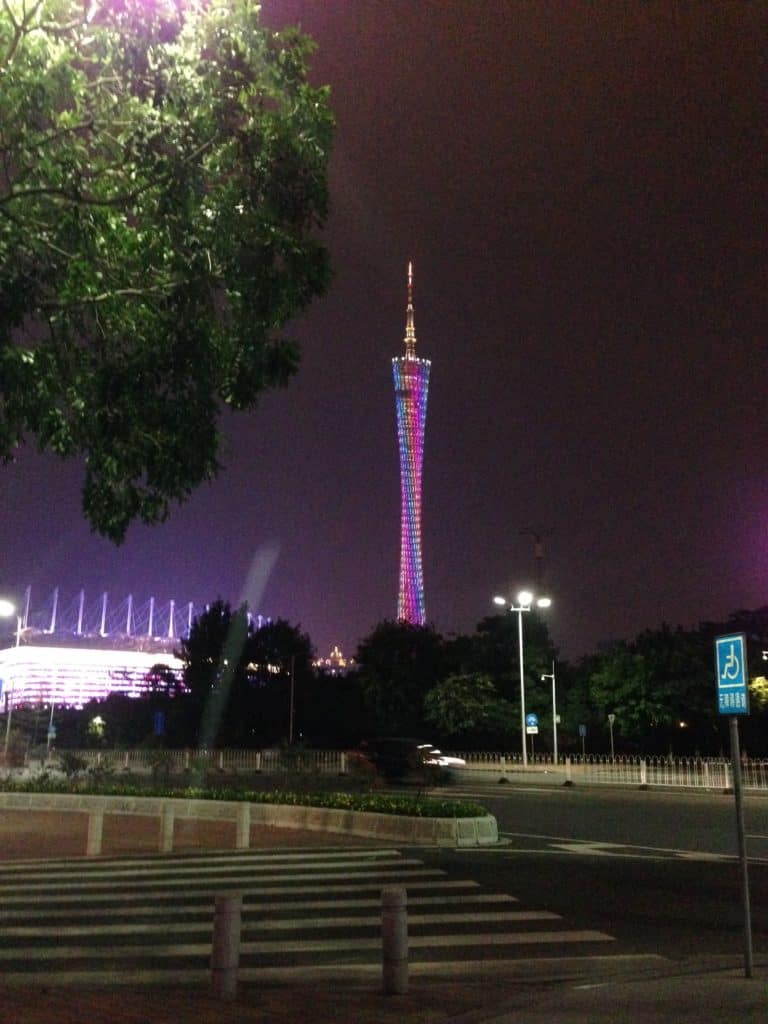
Shopping in the District
From mega malls to tiny stands and stalls along the roads, Zhujiang New Town has something for every shopper. Commerce was always going on around you no matter where you looked. Capitalism is alive and thriving in China and this area is a shopper’s delight.
Shopping Malls
I have never seen such gorgeous shopping malls! It was entertainment to just walk around and see everything in the mall. This is saying a lot because I am not one to shop for pleasure. Many malls were accessible from a subway station, or located very close to station entrances. For some of my adult students, both men and women, shopping was a pastime for them.
Most people enjoyed shopping in the modern malls and they respected the property. These malls were immaculate. Cleaning crews were constantly mopping, sweeping, or changing the trash bags. The malls were always clean.
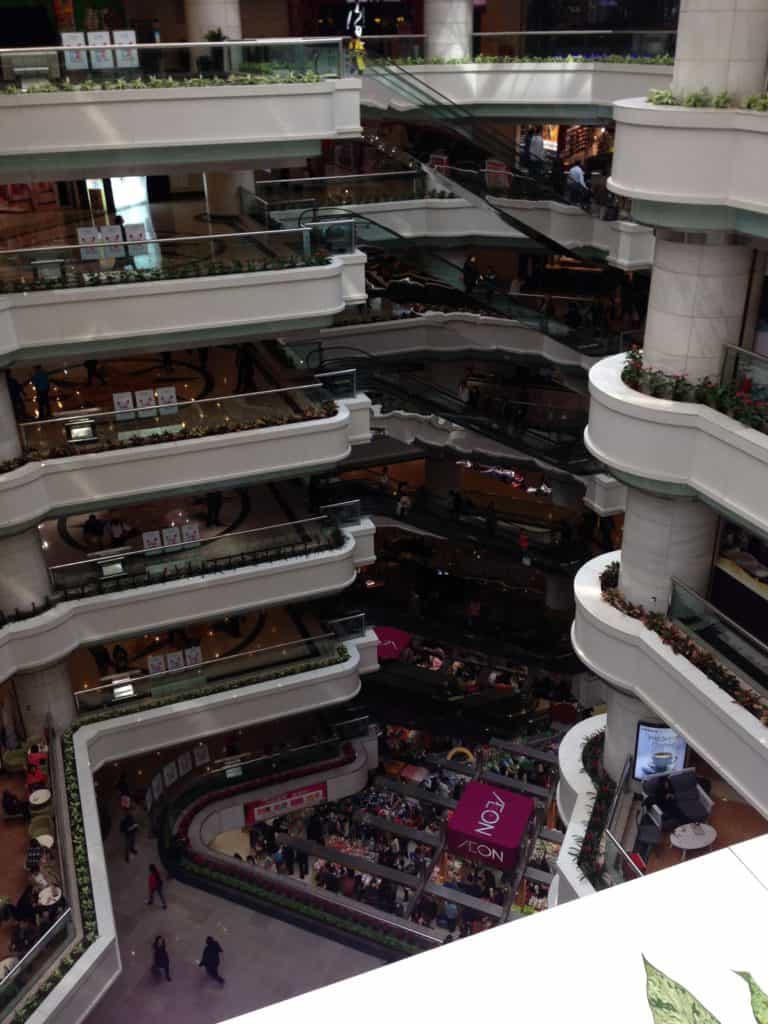
The attention to detail and the service you received was first-class. Many of my Chinese friends said I received better service than they did. We believe this is because the staff thought I was a wealthy American coming to throw my money away.
Even though I didn’t feel wealthy, my salary as a teacher was significantly higher than the average educated working person in the area.
Street Stalls
If you like haggling for a bargain and finding everything from your daily fruits to a faux designer handbag, then try your bargaining skills with a street vendor. Anything and everything could be sold from a mobile cart or a blanket spread out on the ground with the goods displayed to all. Some of the things I purchased from a street vendor are:
- fruits
- fresh-squeezed juices
- handbags
- slippers for the house
- phone cases and accessories
- teapot and cups
- summer sandals
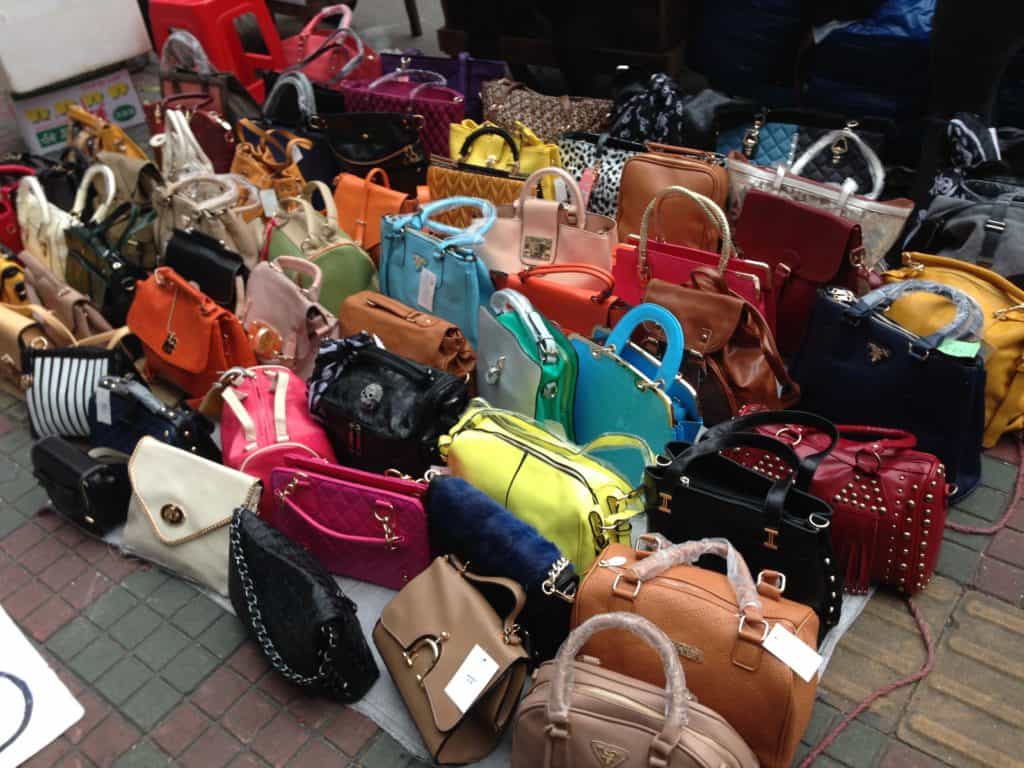
Foreigners are easy to spot in China and you may not get the best price for your purchases. Try your best to haggle to get the price lower. I also suggest having a Chinese friend or guide haggle for you and verify if the quoted price is fair to you. No matter what, have fun and experience shopping in a whole new way.
Supermarkets
It was such a pleasure to shop for groceries. The supermarkets were so organized and neat with everything placed in their specific aisle. Each section would have an employee, usually a woman, who was there to help you find any products. They would always ask to assist me, in Chinese, but I just smiled and said, “I’m OK,” as I waved my hand.
If there was something you needed for your house or kitchen, it was found in these large supermarkets. My only suggestion, since this is the city and you’re either walking or using public transportation to get those groceries home, is to shop frequently. I would wear an empty backpack and then carry two more bags and walk the 10 minutes back to my apartment.
Wet Markets
These are traditional markets that sell vegetables, fresh meat, and other things like eggs and seafood. They used to be set up outside, but have been moved inside to facilities where most people do their daily shopping. I often picked up some pork or chicken here as well as some green veggies, onions, and garlic. Each individual person is running their own stall and you pay as you go. Make sure to take cash.
Dining in and Around Zhujiang New Town
After missing my friends and teaching colleagues, I have to admit the food is the thing I miss the most about my time in China. Food was available 24/7, and it ranged from fine dining to street food from a cart. All within walking distance from your apartment or ready to be delivered, if you spoke or understood one of the Chinese languages (Cantonese or Mandarin) needed to order the food.
Restaurants
The variety of restaurants to choose from in Zhujiang New Town was astronomical. You could choose a nationality and probably find a matching restaurant nearby. Located on the ground floor at the back of my apartment building was the largest Irish pub in the city and an organic vegetarian restaurant was in the front. Unfortunately, McCawley’s Pub has since closed down. That place was amazing.
You could always find your typical American Burger King and Subway in the district. There were also Chinese cafeteria style restaurants, fancy dim sum places, and the more traditional Chinese restaurants serving a multitude of dishes for everyone to choose from. The options were endless and you didn’t lack for a variety of foods to try.
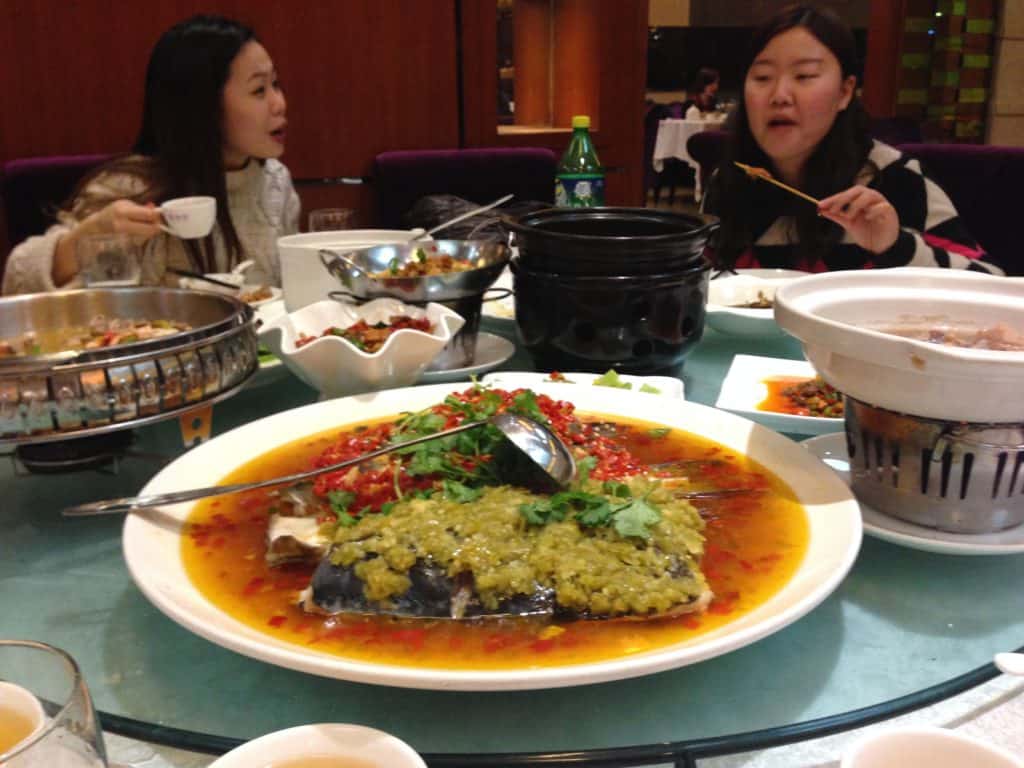
Food was served and placed in the center of a large dining table that spins around. Everyone gets their own rice bowl and picks what they want from the inner circle and places it on their rice. Servers never rushed you out of the restaurant, and there were many times we were still drinking and chatting an hour or more after we finished eating. I miss the food.
Street Food
Although there were more street food carts in the Tianhe District, I would occasionally get fresh dumplings for breakfast on my way into work on the weekends. The carts would be outside the subway entrances and at major intersections I passed on my way to the station. That was the only time I worked early and started around 8:00 or 9:00 am.
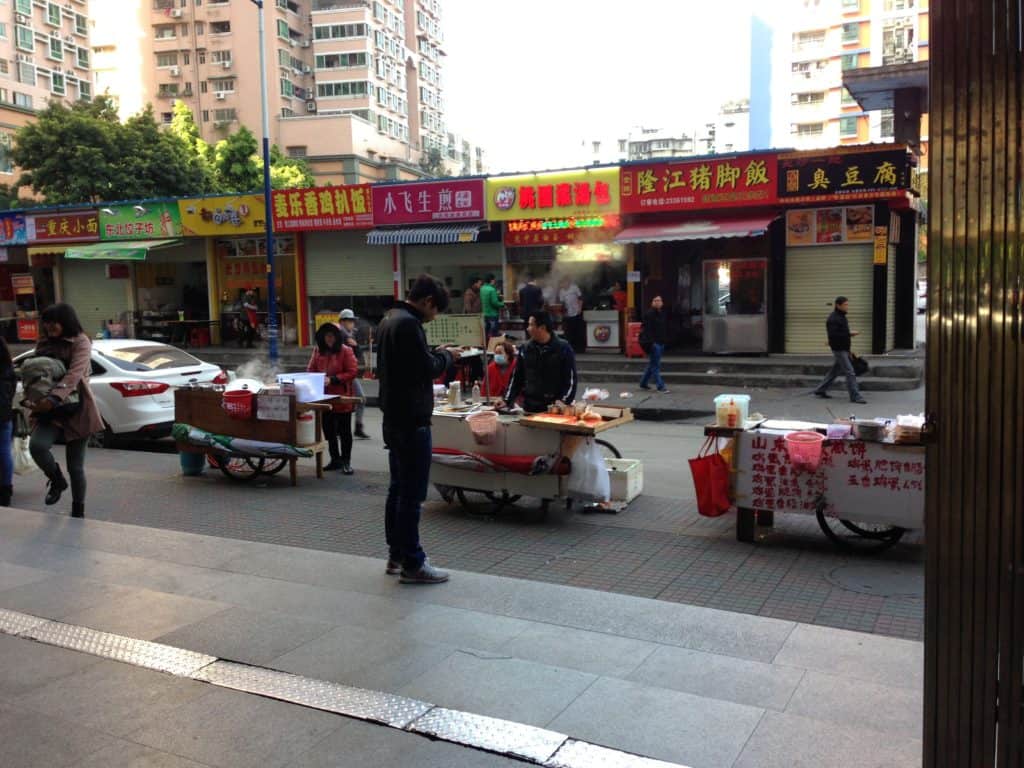
Noodle Shops
Right across the street from the entrance to my apartment building was a noodle shop run by Chinese-speaking Middle Easterners. I ordered by pointing to the menu and most of the time took the food home to my apartment. The few times I ate inside, I watched them in fascination as they pulled and tossed the dough to make fine, thin noodles that were then served fresh.
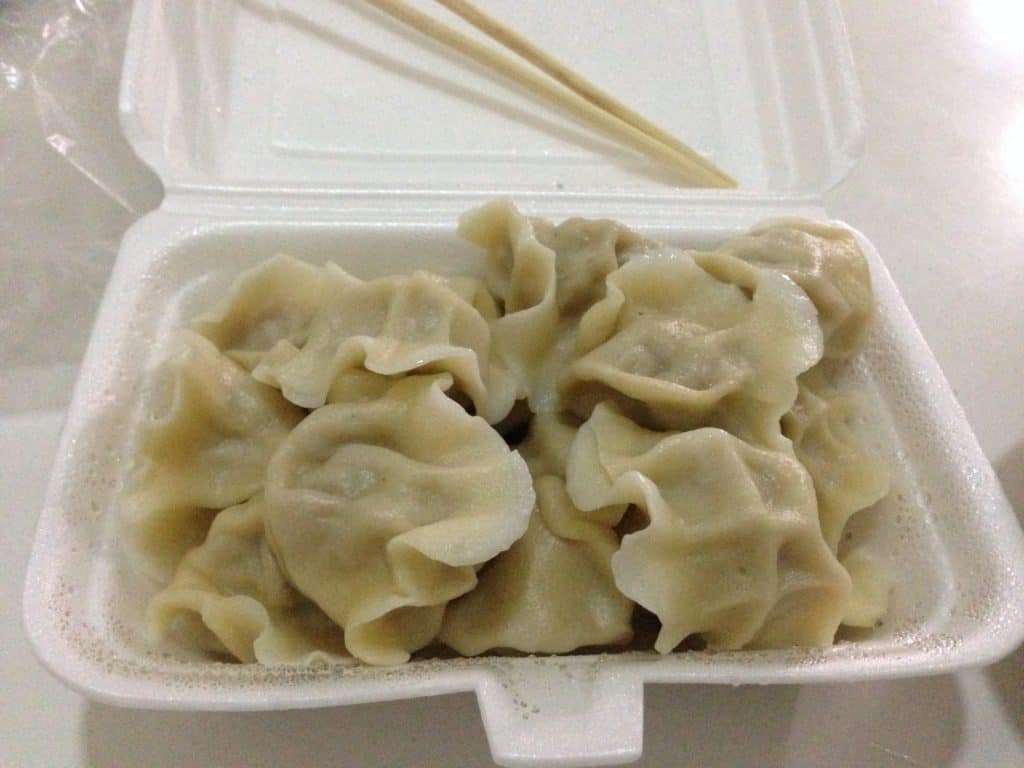
My favorite dish were pork dumplings served with a spicy dipping soy sauce. Fresh, steamy hot, and an entire to-go container for the equivalent of $2.50. Delicious!
What Can You Do in the Zhujiang New Town District?
Although Zhujiang New Town is considered a business district, there are still plenty of things to do in addition to shopping and eating.
Visit the Canton Tower
Although not officially in Zhujiang New Town, you can see the shining tower from most of the district. This iconic landmark is one of the tallest TV towers in the world and offers stunning panoramic views of the city. There’s an observation deck where visitors can enjoy breathtaking vistas both day and night. Click here to learn more.

Explore the Guangdong Museum
This modern museum showcases the history, culture, and art of Guangdong province. It houses a diverse collection of artifacts and exhibits, providing insight into the region’s rich heritage.
Wander through the Zhujiang New Town Central Park
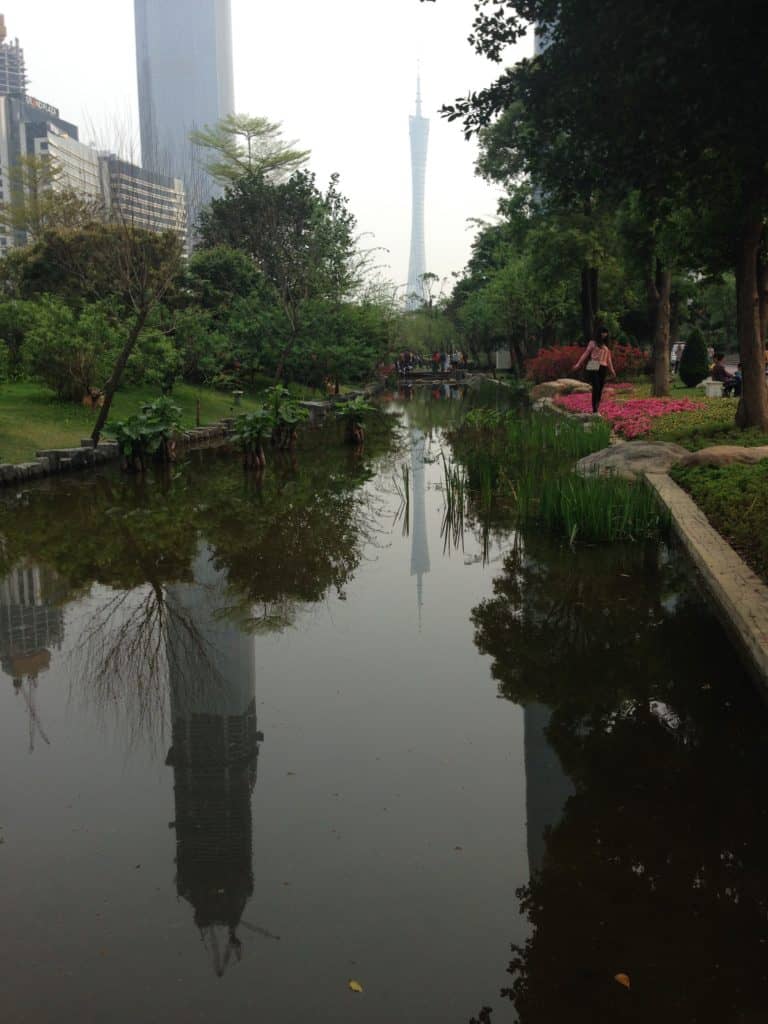
This green oasis provides a relaxing space amid the city’s bustling atmosphere. Visitors can take a leisurely stroll, have a picnic, or simply unwind in the tranquil surroundings. It was a haven for me when the rush of the city became a bit much. The greenery calmed me down a bit as I acclimated to city life.
Admire the architecture
The district is renowned for its modern architecture and skyscrapers. Take a walk around and appreciate the stunning high-rise buildings that shape Guangzhou’s futuristic skyline. The multi-colored lights make an impressive display once darkness falls.

Attend cultural events
The area often hosts cultural events, exhibitions, and performances. Keep an eye on local event listings to see if there are any shows or festivals during your visit. Also enjoy impromptu performances in the parks or on a street corner.
Relax by the Pearl River (aka the Zhu Jiang)
Take a stroll along the scenic Pearl River and enjoy the picturesque views. There are also cruises available that offer a unique perspective of the city’s skyline. I often walked here at night after work. With the sub-tropical temperatures, you will often find many people enjoying the cooler weather once it was dark, children included.
Check out the Guangzhou Opera House
This architectural marvel is a must-visit for lovers of design and culture. Even if you don’t attend a performance, the exterior alone is a sight to behold.
How Do You Get Around the Area?
Public transportation is the name of the game in Guangzhou and in Zhujiang New Town. And you could always walk around the district too.
🚈 The metro line, or subway, was immaculate and ran every few minutes until approximately 11:00 pm. Once on a train, you could connect to anywhere in the city, and even beyond. The metro was my main mode of transportation. You can learn more about the lines and look at the map here.

🚌 If you prefer, the bus was also another common means of getting around. Since not all signs were in English, I stayed with the subway so I didn’t get lost.
🚗 Private cars are not as common since parking is difficult to find and residents must pay high costs to park in the parking garage of their apartment complex.
🚕Taxis were much less expensive than in the United States and I often used them when the weather wasn’t friendly.
🚙 Ride-share service, called DiDi, is very popular in the city but speaking Chinese is usually required to verify where pick-up will be. My friends would call and arrange a ride for me if I chose a ride-share service.
Feeling Safe in Zhujiang New Town
Even though I used taxis and ride-share services to travel around the city, I never felt unsafe. The drivers had the address and brought me there as quickly and safely as possible. I even took rides home after a night out of eating and drinking and still made it home safely every time. Feeling safe was never a concern for me when I lived in Guangzhou.
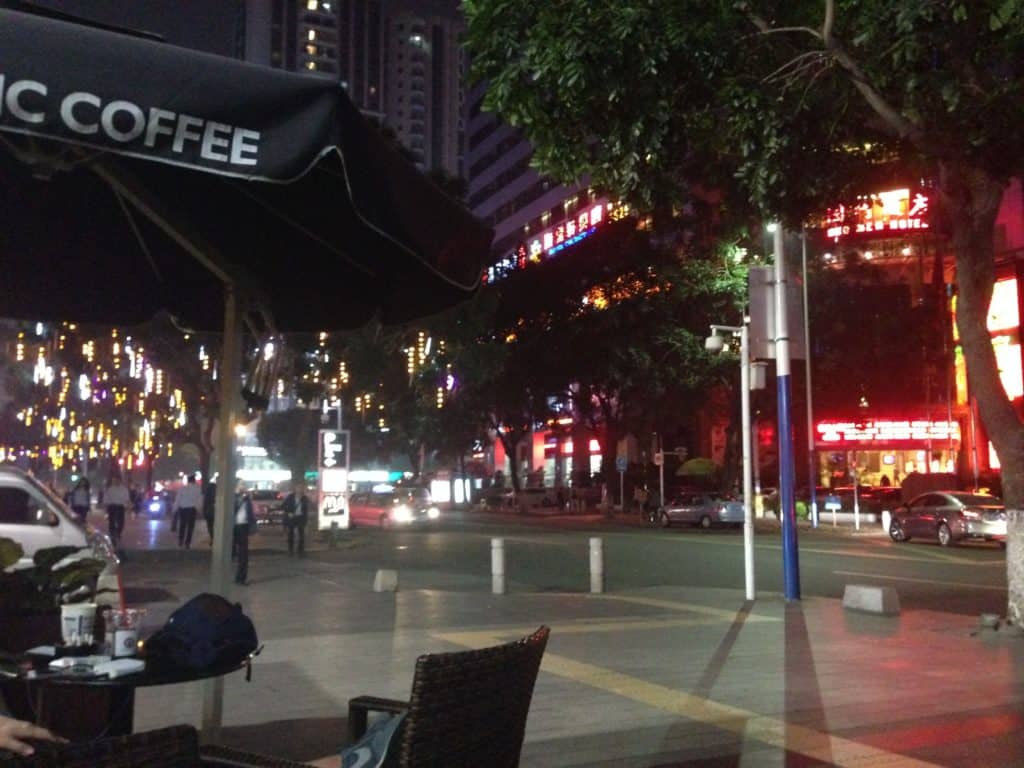
In Conclusion: Zhujiang New Town
Zhujiang New Town may have been chosen for me by the realtors, but they chose well and I was happy and comfortable there. I lived in a secure apartment building, close to the necessities, and very close to the metro line.

If you find yourself visiting the district make sure to explore all that it has to offer. Then branch out and check out the other districts. The city is huge and there’s so much to see and do. And make sure to try all the food.

